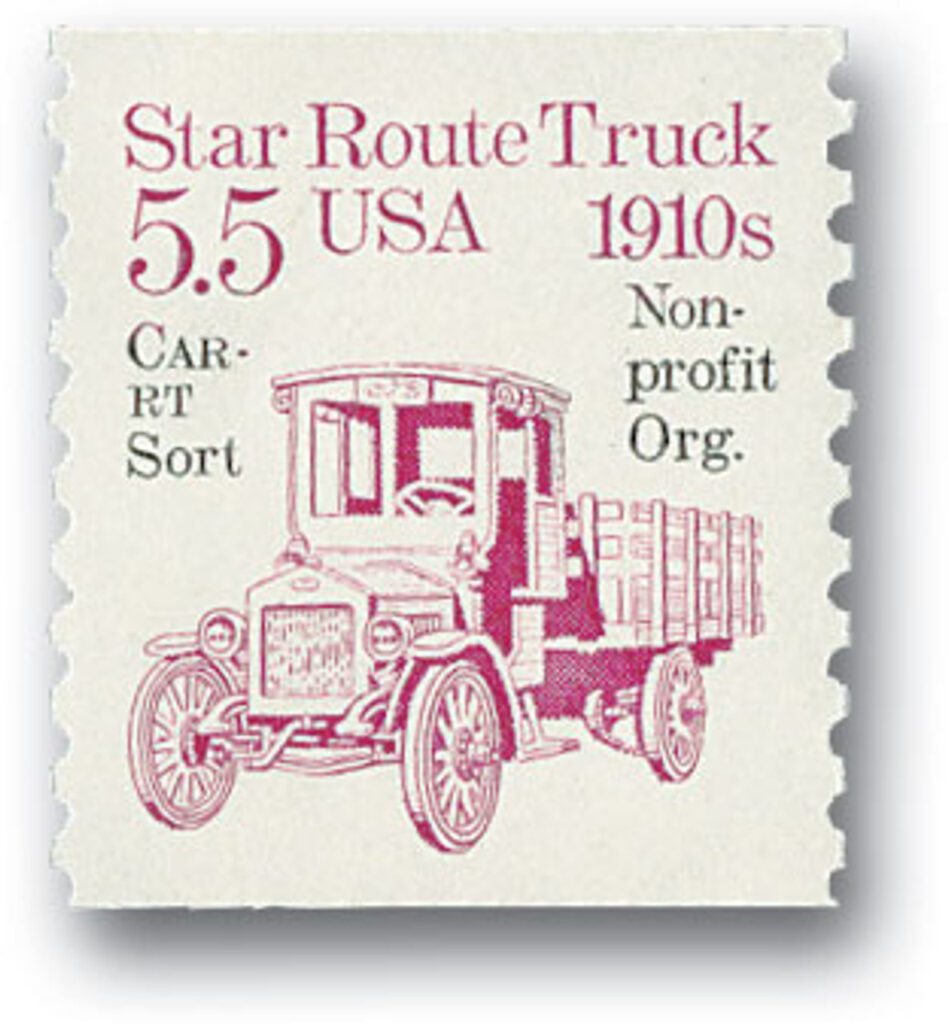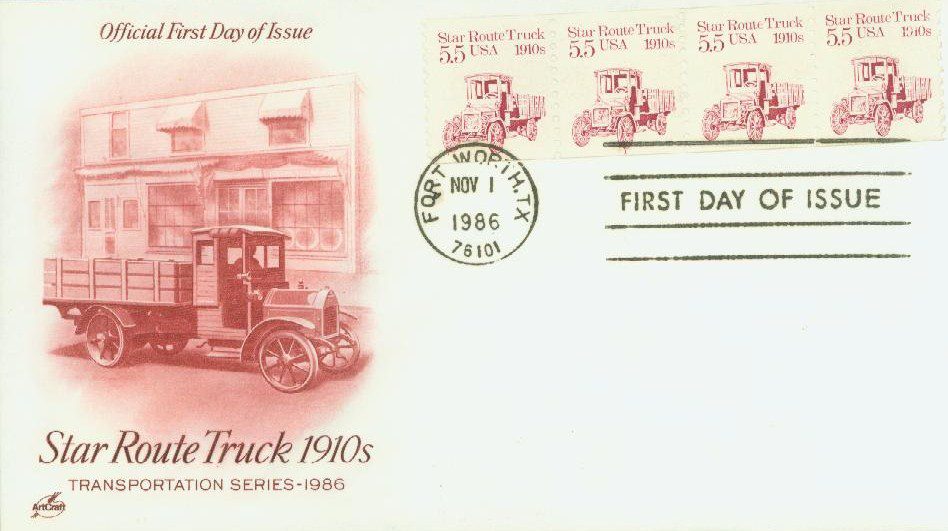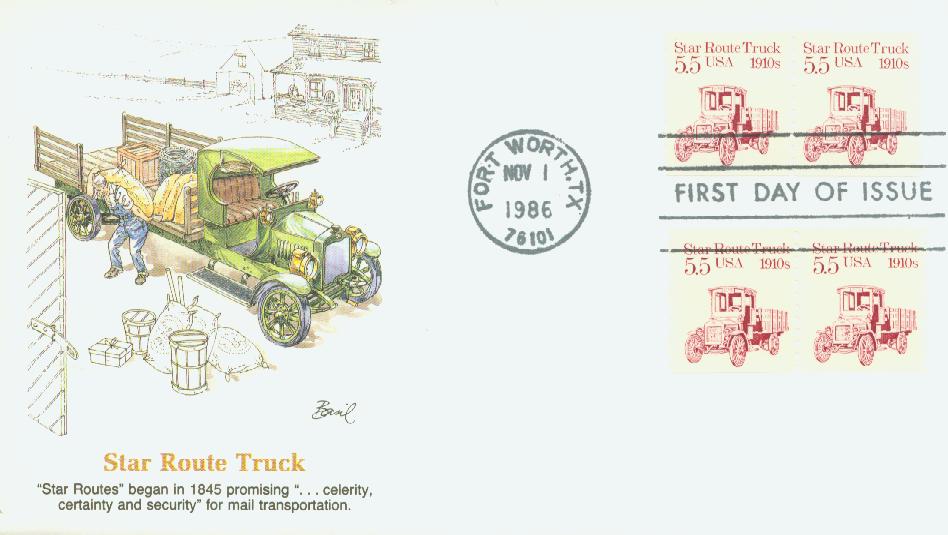On March 3, 1845, a congressional act established star routes. Businesses would carry mail under contract with the post office on these postal routes.
In America’s early history, post riders on horseback carried mail between post offices. In 1785, the continental congress gave the postmaster general permission to give mail transportation contracts to stagecoach operators. Though the costs were high and efficiency sometimes lower, stagecoaches were preferred over horseback transportation.
By 1845, concerns over the cost and inefficiency of these deliveries were growing. More than two-thirds of the Post Office Department’s budget was spent on transportation, so they sought a way to cut back. This led to the Act of March 3, 1845. No longer would preference be given to stagecoaches. Rather, the contracts would be awarded to the lowest bidder for what “may be necessary to provide for the due celerity, certainty, and security of such transportation.”
The bids that businesses submitted became known as “celerity (speed), certainty and security” bids. Mail to the routes covered by these services was marked with three stars leading the routes to be referred to as star routes. By 1849, the post office managed to cut its transportation costs by 17 percent, largely thanks to these star routes. In spite of this, many postmasters continued to prefer stagecoaches on certain routes, so not everyone closely abided by the new law.
After the Civil War, the number of star routes in the US increased quickly due to rapid expansion into the Western and Southwestern regions of the country. Soon, a major scandal brewed that depleted millions of dollars from the national Treasury.
The scandal began when contractors would make extremely low bids for the routes, while others would make extremely high bids. This would lead to a series of default bidding and eventually the contract would go for a very high price. The profits would then be split between brokers, contractors, and members of the post office.
Congress first began investigating this corruption in 1872, but a series of bribes allowed the practice to continue. Another investigation in 1876 led the frauds to shut down temporarily, but they resumed again in 1878. New investigations were launched in 1880 by President Rutherford B. Hayes and 1881 by President James Garfield.
Finally, Garfield’s investigation revealed congressmen and post office officials were involved in the scandal. After Garfield’s assassination, President Chester Arthur continued the probe, and the postal ring was shut down. The men involved were acquitted of all charges, but the fraud stopped. The case highlighted the corruption in government jobs, and Americans wanted reforms within the civil service. This helped lead to the Pendleton Civil Service Reform Act of 1883.

Over the years, star routes would carry mail to some of the most remote regions of the country. As most of the star routes were located in hard-to-reach areas, sometimes canoes or boats were used. Later, boats, trains, and even airplanes were used on these routes.
Star routes declined in the 1950s, but made a resurgence in the 1960s following the Highway Act of 1958. Between 1960 and 1970, star route miles were more than doubled in the US. Then in the 1970s star routes became known as highway contract routes, though many would continue to use the old name. In the 2000s, the USPS still had 16,700 highway contract routes, about 45% of which deliver mail to customers along their routes.
| FREE printable This Day in History album pages Download a PDF of today’s article. Get a binder or other supplies to create your This Day in History album. |
Discover what else happened on This Day in History.




When I was a kid in the 70’s, my great uncle and aunt’s address was “Star Route 7” plus the town and where they lived. I remember asking both my parents why it was called Star Route and they had no idea. Neither did the Aunt and Uncle. My third grade teacher lived on another “Star Route” and I asked her as well. She did not know and actually called a man she knew who worked the counter at our local Post Office. He did not know but told my teacher it went “way back”. After a while my curiosity on the matter dwindled and I stopped asking. I will be 60 years old this month and my question is finally answered!!! Thank you for the interesting and informative article.